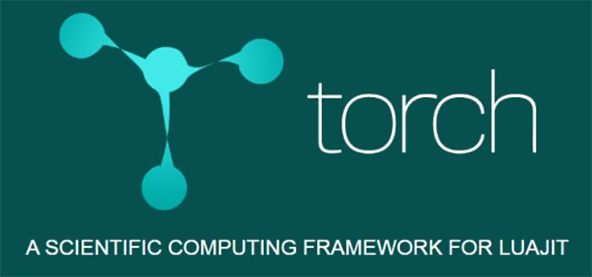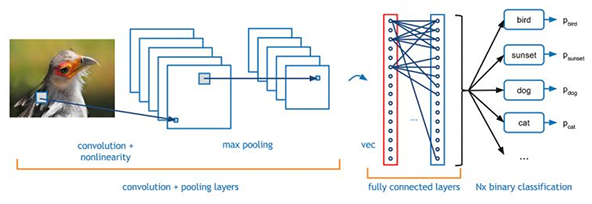Is the future an AI era? Most likely, yes, you can see AI-related news almost every day. Will you also have an urge to delve into AI and create the next AlphaGo?
However, learning AI is hard to say, but it's never easy to say simple, especially for beginners, it's easy to feel awkward. Last week, AI Technology commented on the urgency of everyone's urgency and prepared several wonderful AI introductory tutorials for everyone. This will open up the mysteries behind the current AI's hottest machine learning methods.
Want to learn about machine learning? Ten basic algorithms you need to know

Naive Bayes classification
What is the nature of machine learning? In fact, it is a continuous choice of probability and adjustment, but in the end is how to adjust? In the end, what is the function of the neural network? This article explains these issues in detail. The article lists ten types of neural networks in the three categories of supervised learning, unsupervised learning, and reinforcement learning, and briefly introduces their respective principles, applicable scenarios, and the advantages of computing. When you think about what a new project requires, which algorithm to use is the most convenient and fast, this article can give you some inspiration. For beginners, this is also a good opportunity to understand the general state of machine learning.
Deep learning - the eight open source frameworks you need to understand

One of the open source frameworks: Facebook's Torch
After having a general understanding of the theoretical framework of machine learning, you may get into a puzzle: how do I translate these theories into truly runnable programs? On this issue, many of the big companies with a reputation for artificial intelligence research have given their own answers: publishing their own open source frameworks. The framework can be seen as some APIs, or more straightforward - the equivalent of building blocks. Using the algorithms and structures built into the framework, you can use your programming language to become a reality with relative ease. Some of them are based on the widely used Python, Java, C/C++, and some are based on relatively unpopular languages ​​such as Lua. However, their purpose is the same: to provide developers with a relatively comfortable development environment. So if you are thinking about which language to use to implement your algorithm, you may wish to refer to this article that introduced eight popular AI open source frameworks.
Daniel's Deep Study Notes, Deep Learning Quick Guide

Some classic features of deep learning
Here, the most basic preparations have been made. We can further study the theoretical system of deep learning. This article starts with the concept of deep learning and explains basic ideas, network structures, and training processes from the beginning to the end. Finally, several common modeling methods for deep learning are introduced. It is helpful to have a clear idea of ​​the algorithm.
Newbie Guide to Convolutional Neural Networks (CNN)

Convolutional neural network working principle
Convolutional Neural Network (CNN) is a feedforward neural network and is a very important type in deep neural networks. Its characteristics are often used in image processing systems and can achieve good results. This article combines several examples of image recognition, briefly explained the idea and method of establishing a CNN model, and gives some test methods and commonly used applications. I believe that after reading this article, you will have a deeper understanding of image recognition algorithms.
Want to understand recursive neural networks? Here is an introductory tutorial

Simple Recursive Network (Left) vs. LSTM Unit (Right)
Recurrent neural networks are also an important category in artificial neural networks. They are good at identifying patterns of sequence data such as texts, genomes, handwriting, and speech, or identifying numerical time series data generated by sensors, stock markets, and government agencies. .
The recursive network can be said to be the most powerful neural network. It can even decompose an image into a series of image blocks and process it as a sequence. More importantly, because recursive networks have a specific memory model, memory is one of the basic capabilities of intelligence. So "the strongest neural network" can be said to be well-known. This article describes some application methods of recursive neural networks and focuses on the use and debugging methods of the memory unit (LSTM). The importance of memory for AI is visible.
More……
Learning the sea is boundless. A few articles in just a week may not allow you to become a god from a little white that has never studied machine learning, but we hope that these articles will give you enough guidance. Help everyone to take some detours in the process of learning. We will continue to publish more in-depth tutorials in the future. Please continue to pay attention to
A siren is a loud noise-making device. Civil defense sirens are mounted in fixed locations and used to warn of natural disasters or attacks. Sirens are used on emergency service vehicles such as ambulances, police cars, and fire trucks. There are two general types: pneumatic and electronic.
Many fire sirens (used for calling the volunteer fire fighters) serve double duty as tornado or civil defense sirens, alerting an entire community of impending danger. Most fire
sirens are either mounted on the roof of a fire station or on a pole
next to the fire station. Fire sirens can also be mounted on or near
government buildings, on tall structures such as water towers,
as well as in systems where several sirens are distributed around a
town for better sound coverage. Most fire sirens are single tone and
mechanically driven by electric motors with a rotor attached to the
shaft. Some newer sirens are electronically driven speakers.
Fire sirens are often called "fire whistles", "fire alarms", or
"fire horns". Although there is no standard signaling of fire sirens,
some utilize codes to inform firefighters of the location of the fire.
Civil defense sirens also used as fire sirens often can produce an
alternating "hi-lo" signal (similar to emergency vehicles in many
European countries) as the fire signal, or a slow wail (typically 3x) as
to not confuse the public with the standard civil defense signals of
alert (steady tone) and attack (fast wavering tone). Fire sirens are
often tested once a day at noon and are also called "noon sirens" or
"noon whistles".
The first emergency vehicles relied on a bell. Then in the 70s,
they switched to a duotone airhorn. Then in the 80s, that was overtaken
by an electronic wail.
Piezo Alarm,Siren And Alarm,Piezo Buzzer Siren,Piezo Buzzer Alarm Siren
Jiangsu Huawha Electronices Co.,Ltd , https://www.hnbuzzer.com